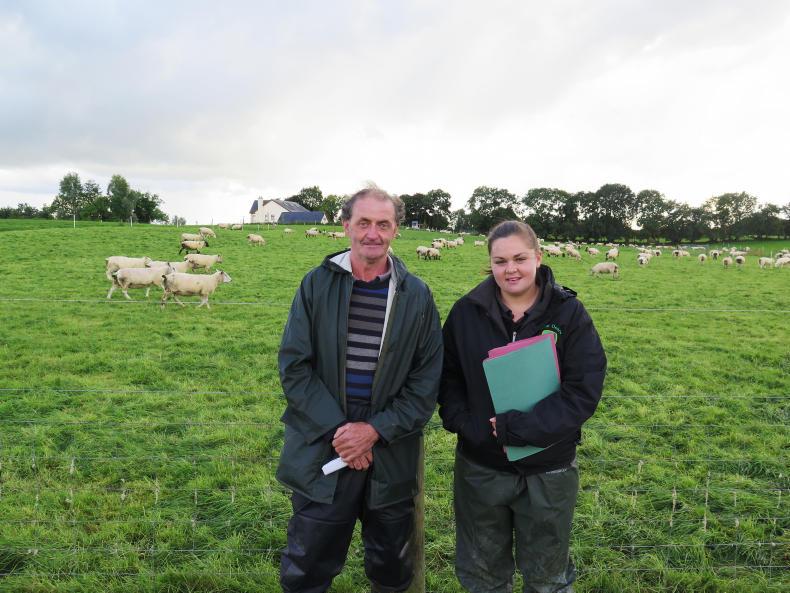Co Kerry
Walking through Tomas O’Leary’s farm at Rosnacarton, Beaufort, outside Killarney, you cannot but notice the epic scenery all around you. If scenery is a feast for your eyes, the 320 ewes on the farm have a feast on the double as grassland management on the 28ha block at Rosnacarton is excellent.
The farm is divided into three sections with six paddocks in each section, so 18 paddocks in total. Ewes and lambs are rotationally grazed through the six paddocks. Tomas made use of the TAMS II grant for sheep fencing so grazing infrastructure is excellent with lots of new fences put up. The fields are accessed by farm roadways and water troughs are in every paddock.
About 60 cattle graze on this farm also. The ewes are highly stocked at 12 ewes/ha on average. The ewes are mixed grazed with mature ewes split into two groups and grazed with bullocks while a batch of heifers are grazed with yearling hoggets rearing lambs.
Tomas has been measuring grass for the last four years and average grass growth over 2015 and 2016 was 11.7t/ha. He measures grass weekly with a plate meter. His target pre-grazing yield is 1,200kg and Tomas expects to graze out to 4cm. When the judges visited in mid-September, the lambs were busy grazing a field of lush grass. Tomas was annoyed that thrive in the lambs was less than normal at 100g/day so he introduced meal three weeks earlier than usual. The farm is low in phosphorus so Tomas is addressing this by spreading extra phosphate. A half a bag of superphosphate is spread in spring and summer and a half bag per acre of 0:10:20 is spread on the low P index soils.

Co Louth
The next sheep farmer visited was Peadar Kearney from Tallanstown, Co Louth. Peadar is farming 27ha of good land in two blocks. The home farm consists of 10ha and a leased outblock of 16ha.
Peadar is a full-time sheep farmer with no other stock. He has 330 ewes this year so the stocking rate is 12.2 ewes/ha. He says he began to get serious about grass four years ago. Back then, he was buying all of his silage for the winter. After his first year of managing grass better and focusing on growing more grass, he only had to buy half his winter silage needs. Last year, he had to buy no silage and this year he will have surplus silage.
During this period, the area of land being farmed hasn’t changed and ewe numbers have actually increased. In terms of grazing infrastructure, Peadar’s farm is a model farm. The land is laid out in 14 permanent divisions and temporary sheep fences are used to subdivide these areas further.
Peadar is a member of the Teagasc monoculture study, so he only reseeds using monoculture grass varieties. He has a preference for the variety Majestic as he says it is performing well on his farm. Last year, the farm grew 15.5t/ha and when the judges visited in mid-September the farm had grown 11.5t/ha
Soil fertility is good with 91% of the farm at or above index 3 for potash and 87% of the farm at or above index 3 for phosphorus.
Two tonnes/acre of lime was spread across the farm in 2015 and pH levels have improved as a result.
In terms of meal feeding, better grassland management has resulted in big savings for Peadar, with the volume of meal fed reducing by 33% from 2015 to 2016 with further reductions also achieved this year.







 This is a subscriber-only article
This is a subscriber-only article











SHARING OPTIONS: